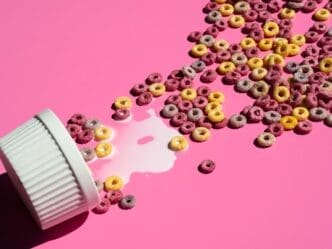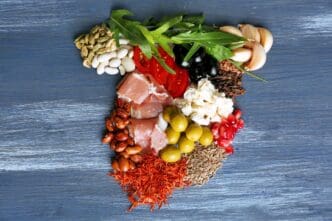In a decisive move, the U.S. Food and Drug Administration (FDA) recently announced the banning of Red 3, an artificial dye used extensively in the food industry, citing cancer risks in laboratory animals as a core reason for the prohibition.
The FDA’s decision to ban Red 3 stems from studies linking the dye to cancer in lab rats. The federal mandate requires the removal of such additives from the market if they’re found to cause cancer in animals, even though the mechanism in rats doesn’t translate directly to humans. Red 3, also known as erythrosine, is widely used in candies, cough syrups, and various food products. This move by the FDA has set a timeline for manufacturers, giving them until January 2027 to eliminate the dye from their food items, with pharmaceutical products following suit by January 2028.
The broader realm of artificial food dyes includes nine main synthetic colors, such as Blue 1, Blue 2, Green 3, Red 40, Yellow 5, and Yellow 6, each serving to enhance the visual appeal of food products. The safety of these additives has been scrutinized not only for potential carcinogenic properties but also for their behavioral effects on children. Researchers have associated artificial colors with symptoms like hyperactivity and impulsivity in children, particularly those with ADHD. Dr. L. Eugene Arnold, an authority on psychiatry, notes that while these colors are not the primary cause of ADHD, they may exacerbate symptoms in some cases.
Consumer advocates have long voiced concerns about artificial dyes. Their efforts led to Red 3 being banned in cosmetics decades ago, although it lingered in edibles and medications until now. The FDA maintains that most children will not experience adverse effects from color additives, yet acknowledges that a minority might be sensitive.
The movement against synthetic dyes is gaining traction in legislative circles. California has led by example, prohibiting six artificial food dyes in public schools, prompting numerous state legislatures to consider similar bans. Meanwhile, public support is evident, as a recent poll indicated that a majority of Americans favor restrictions on ingredients like synthetic dyes and added sugars in processed foods.
In light of these concerns, some manufacturers are exploring natural alternatives to synthetic dyes. These include using beet juice, carmine, or pigments from natural sources like purple sweet potatoes, red cabbage, and radishes. Meghan Skidmore from Sensient, a color and flavoring supplier, notes the challenges in this shift due to the stability issues of natural dyes, although they offer a viable path forward for those seeking to avoid artificial ingredients.
Consumers can take proactive steps to limit their intake of artificial dyes by scrutinizing ingredient labels. Dr. Arnold advises those concerned to avoid products with lengthy ingredient lists that often include unpronounceable substances.
The FDA’s ban on Red 3 marks a significant shift towards scrutinizing artificial additives in the food supply. As the momentum grows for natural alternatives and regulatory reforms, manufacturers and consumers alike are navigating this evolving landscape. Vigilance and informed choices remain crucial for those concerned about artificial dyes and their potential effects.








